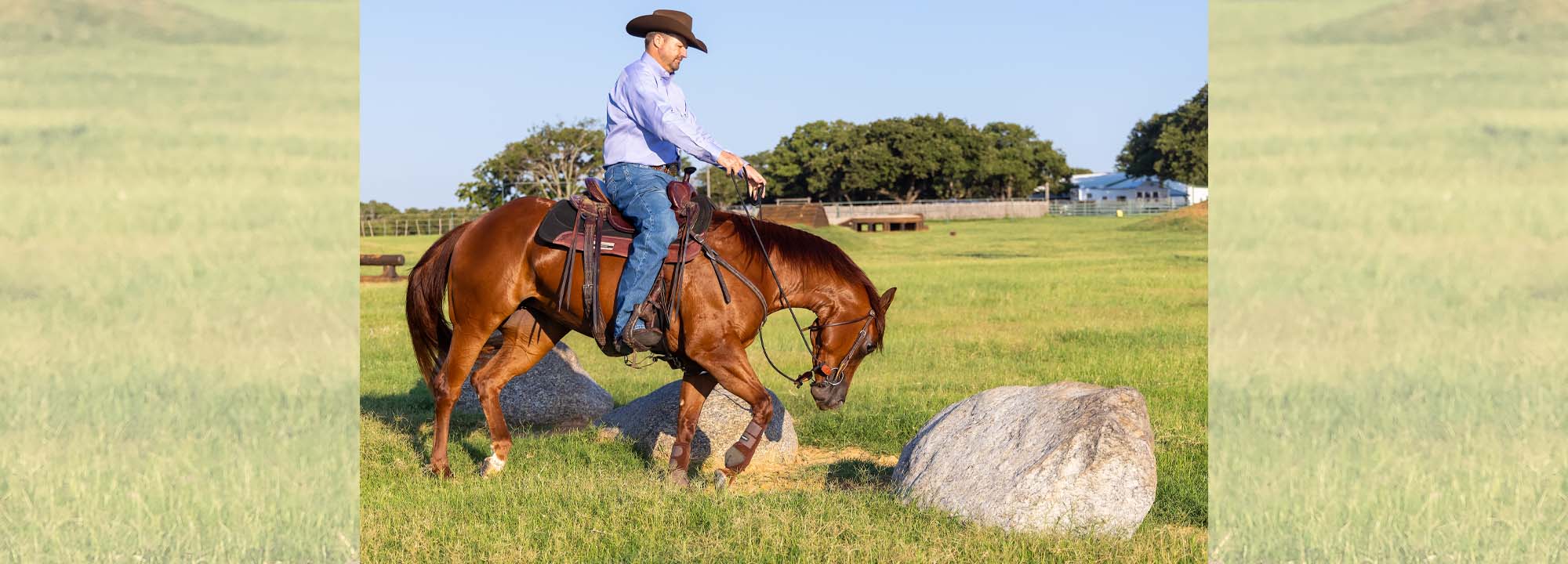Question: Firewater did really well through the Fundamentals, so I started him on the Intermediate Series and got up to the Cloverleaf Exercise. He stays really soft throughout his entire body at the walk, trot and canter while doing the Bending Transitions exercise and he is really soft vertically at the walk and soft laterally. When I ask him to trot and lope the Cloverleaf, he stiffens up his whole body and his neck and sticks his nose in the air. If I roll my spur up and down his side to get him to get soft, he starts going faster. He also actually arcs toward his buddies and the barn. I have let him run back there on his own accord countless times and worked him around his buddies until he is ready to drop, but he never gives up. I really have no idea about how to get him soft and to quit being busy minded. – Angela J.
Clinton’s Answer: What your horse is doing to you is common, and the Cloverleaf Exercise, when done correctly, will help you correct him. I’d encourage you to go back and watch the lesson again from the Intermediate Series and study your Arena Mates because you’re missing a couple of important points.
When teaching a horse the Cloverleaf Exercise, I’m only concerned that he follows his nose around the corners of the pattern and travels the straight lines without leaning one way or the other or anticipating turning. At this point in his training, I don’t worry about asking him to collect or soften vertically. I don’t even care what lead he is on. All I focus on is riding the pattern correctly. So, at this point, you should not be asking your horse to soften to you or be using your spurs at all.
Later on, after you’ve taken your horse through the Method and he’s out of the teaching stage for this exercise, you can bridle him up while loping the pattern, but not at this stage in his training. It’s unfair to him and is just setting him up for failure.
When you’re working on a guiding exercise like the Cloverleaf, you want to keep the horse a lot straighter throughout his body. You only put a lot of bend in him when you’re softening and suppling him.
When doing the Cloverleaf Exercise, I don’t stick to just doing a left or right pattern. I let the horse tell me which way to turn. After passing the center of the pattern, I pay close attention to which way the horse is leaning. All horses have magnets—the barn, the gate or other horses—that they try to get back to and you’ve experienced this with your horse trying to get back to his buddies.
If your horse leans to the left to get back to his buddies, turn him right. If he leans right, turn him left. Always go the opposite way he wants to go. Eventually, he’ll learn to stop trying to pick the direction and let you guide him.
Don’t be surprised if it takes a couple of days of consistent practice to break the horse of this habit. As a general rule, it takes about four days of practice before a horse does the exercise really well. The first couple of days, you may not get to do the full left or right pattern much at all because the horse will be leaning too much. As long as you keep turning him in the opposite direction, he will get tired of getting redirected and learn to wait for you to pick the direction you want to turn.
Have a horsemanship question or looking for more training tips? Check out the No Worries Club.





